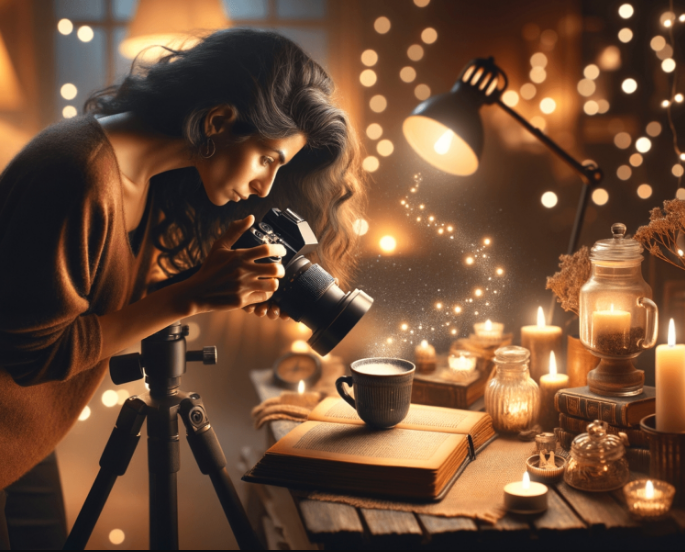Night photography is a fascinating genre that allows photographers to capture stunning images in low-light conditions. While many people associate night photography with outdoor landscapes or cityscapes, you can achieve incredible low-light shots at home. Whether photographing indoor scenes, using creative lighting techniques, or experimenting with long exposures, learning to work with limited light sources can take your photography skills to the next level.
This blog will explore tips and techniques for mastering night photography at home. These techniques ensure you get sharp, well-exposed images even in the darkest conditions.
1. Use a Tripod for Stability
Low light means slower shutter speeds, which can cause unwanted blur if the camera shakes, even slightly. A sturdy tripod is essential for night photography at home, allowing you to keep your camera steady and capture sharp images.
If you don’t have a tripod, place your camera on a stable surface, such as a table, bookshelf, or windowsill. Additionally, a remote shutter release or the camera’s timer can help eliminate vibrations caused by pressing the shutter button.
2. Adjust Your Camera Settings for Low Light
Shooting in low light requires adjusting your camera settings to allow more light in. The three key settings to manipulate are:
- Aperture (f-stop): A wider aperture (lower f-number, like f/1.8 or f/2.8) lets in more light. If you’re using a DSLR or mirrorless camera with a fast lens, this can significantly improve your night shots.
- Shutter Speed: A slower shutter speed (1/10 sec or longer) allows more light to enter the sensor. However, this increases the motion blur risk, so a tripod is essential.
- ISO: Raising the ISO (800-3200) makes the camera more light-sensitive. However, higher ISO values can introduce noise, so balance brightness and clarity.
Manual mode (M) or aperture priority mode (A/Av) allows you to control these settings more fully.
3. Experiment with Available Light Sources
At home, you can get creative with the light sources available. Try using:
- Lamps: Position table or floor lamps at different angles to create dramatic lighting.
- Candles: Soft candlelight adds a warm, moody atmosphere to portraits and still-life photography.
- Fairy Lights and LED Strips: String lights can add a magical touch to your compositions.
- TV or Computer screens: Screens emit soft, diffused light, perfect for creative portraits or abstract images.
Experiment with different light placements and angles to create depth and contrast in your images.
4. Use Long Exposure for Creative Effects
Long-exposure photography lets you capture movement in low-light conditions by setting your shutter speed to several seconds. This allows you to experiment with light trails or motion BLDS (e.g., 5-30 seconds).
Some ideas include:
- Capturing light trails from moving objects like flashlights.
- Painting with light by waving a small LED light in front of the camera. Ghostly effects are created by having a subject move during a long exposure shot.
Manual focus can also help ensure sharpness, as autofocus can struggle in dark conditions.
5. Edit Your Night Photos for Better Results
Post-processing can enhance night photography by adjusting brightness, contrast, and color balance. To refine your images, use editing software like Adobe Lightroom or Photoshop or free apps like Snapseed.
- Reduce noise to eliminate grainy textures from high ISO settings.
- Enhance shadows and highlights to bring out details lost in darkness.
- Adjust the white balance to correct the color tone, especially in artificial lighting.
A little post-processing can make a massive difference in perfecting your low-light photos.
Final Thoughts
Mastering night photography at home requires technical adjustments, creative lighting, and experimentation. You can capture stunning images even in dark environments by using a tripod, adjusting camera settings, and working with available light sources.
So, grab your camera, experiment with different lighting setups and exposure techniques, and turn your home into a low-light photography studio!
#NightPhotography #LowLightPhotography #PhotographyTips #HomePhotography #LongExposure #CreativePhotography #PhotoEditing #PhotographyAtHome




